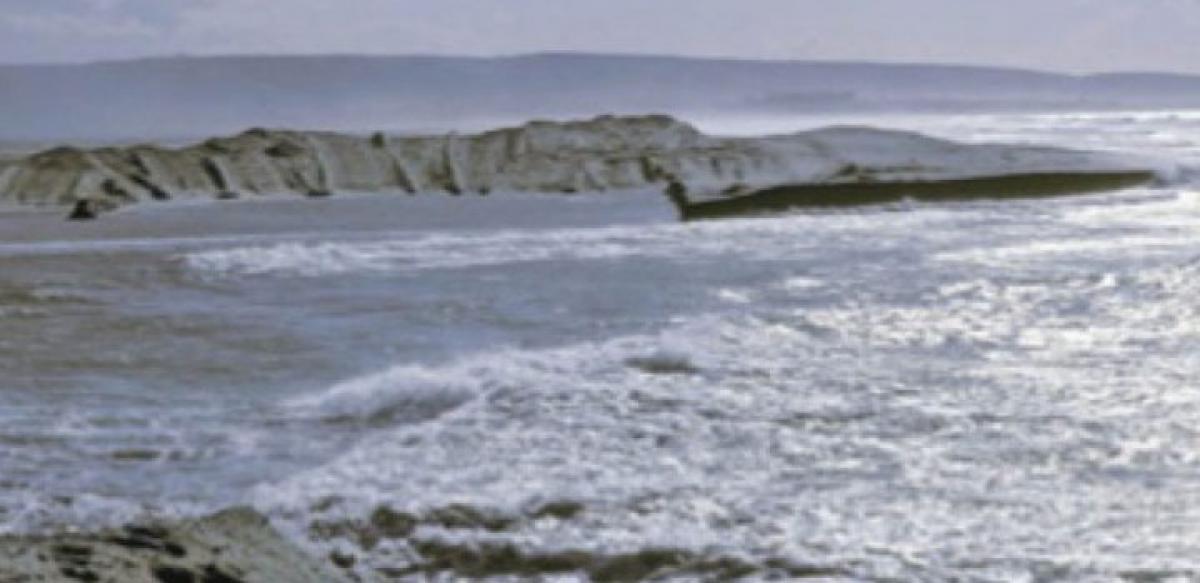Live
- VIT Engineering Entrance Exam (VITEEE) from today
- BJP demands removal of ‘biased’, ‘incompetent’ officers
- Prof Vani takes charge as Dean in SPMVV
- My Dear Donga: trailer get grand launched
- Supreme Court reserves verdict
- Poll battle begins
- Phase 1 polls in 102 seats across 21 states today
- 39 candidates file papers on Day 1
- ED arrests AAP MLA Amanatullah Khan in Waqf Board appointment scam
- LS polls: Union Minister Bhagwanth Khuba, Dingaleshwara seer, Priyanka Jarkiholi file nominations in K'taka
Just In

According to a study, mushrooming aquaculture ponds and other seawater-based industries were found to be a threat for drinking water in villages close to Bay of Bengal in Nellore district in future. Many areas are highly vulnerable to salt water intrusion with these units and the study revealed that waters in these areas are having high levels of contaminants.
- Seawater intrusion is highly prevalent in Indukurpet and Muthukur mandals
- Aquifer sources are contaminated with aqua farms and seawater-based industries
- Experts predict acute drinking water problem in future

Nellore: According to a study, mushrooming aquaculture ponds and other seawater-based industries were found to be a threat for drinking water in villages close to Bay of Bengal in Nellore district in future. Many areas are highly vulnerable to salt water intrusion with these units and the study revealed that waters in these areas are having high levels of contaminants.
An aquifer is an underground layer of water-bearing permeable rock or unconsolidated materials from which groundwater can be extracted using a well. The coastal aquifers constitute an important source of water in the region.
Groundwater contained in coastal aquifers is a vital freshwater resource in the coastal region. Freshwater aquifers provide water for irrigation of crops and industrial processes. They also provide flow to stream and rivers during dry periods, thus supporting diverse ecosystems.
But, these systems in coastal villages in the district were getting disturbed with mushrooming industrial and aquaculture ponds where saltwater intrusion caused by excessive groundwater extraction is already impacting the places.
The district has 169 km coast and no region is exempted from aqua ponds and many villagers complain that they were facing difficulty to drinking water as the existing sources are gradually affected with salinity. Based on the hydro-geochemical parameters the seawater intrusion was noticed in Indukurpet mandal followed by Muthukur.
“The fresh water aquifers are in linked to seawater so management of such aquifers requires special attention since they are potential zones for seawater intrusion. But, aqua pond owners who lack basic knowledge are damaging the valuable resources. Future generations would face problem of scarcity of water,” said Prof G Krishna Rao, a retired professor in geology.
A study revealed that coastal mandals in the district such as Kavali, Allur, Vidavalur, Indukurpet, TP Gudur, Muthukur, Kota, Vakadu and Chittamur where red soils are pre-ominant with 40 per cent of the area witnessed high pH of groundwater ranging from 7.59 to 8.94. The pH generally ranges from 7.0 to 8.5 with the higher range 7.5 to 8.0 confined to the eastern, central and north western parts.
Higher pH value is observed at Allur, Kudithipalem, and Mypadu villages. In these areas Total Dissolved Solids (TDS) values are ranging from 428 to 4,463 mg/lit. The TDS with less than 500 mg/l is observed in Kesavaram of Kota Mandal and maximum range of TDS with more than 1,500 mg/l found in Ramudupalem of Indukurpet mandal with 4,463 mg/l.
Hardness of ground water also is ranging from 36 to 1,238 mg/l. But the general range is 300 to 600 mg/l. Temporary hardness level with less than 75 mg/l, which is somewhat safe, is not observed and moderately hard water (75-150 mg/l) occurs in Pallipadu and Mothalu village of Indukurpet.
Hard water with 150-300 mg/l range is spread in most of the area. Interestingly, maximum range of sodium more than 300 mg/l, hard waters are observed in most of the places in Kudithipalem of Indukurpet Mandal.
The minimum range of sodium is about 106mg/lit situated in Indukurpeta Mandal and the maximum range of 680mg/lit situated in Mypadu in the same mandal. Chloride is the dominant in groundwater in Kudithipalem in Indukurpet mandal ranging from 30- 1300 mg/lit and low concentration of 30 mg/lit is observed in Kesavaram in Kota mandal.
By:P V Prasad

© 2024 Hyderabad Media House Limited/The Hans India. All rights reserved. Powered by hocalwire.com







